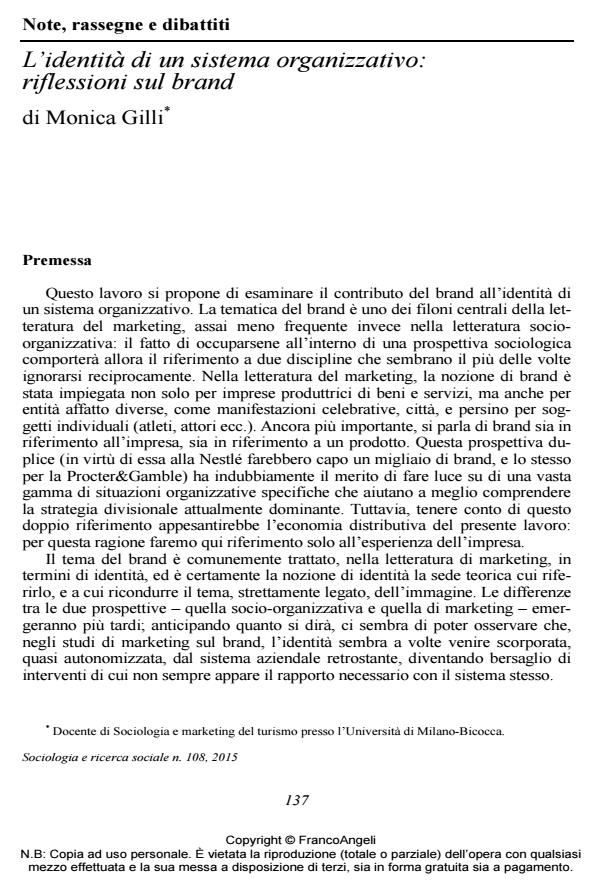L’identità di un sistema organizzativo: riflessioni sul brand
Titolo Rivista SOCIOLOGIA E RICERCA SOCIALE
Autori/Curatori Monica Gilli
Anno di pubblicazione 2016 Fascicolo 2015/108
Lingua Italiano Numero pagine 19 P. 137-155 Dimensione file 101 KB
DOI 10.3280/SR2015-108007
Il DOI è il codice a barre della proprietà intellettuale: per saperne di più
clicca qui
Qui sotto puoi vedere in anteprima la prima pagina di questo articolo.
Se questo articolo ti interessa, lo puoi acquistare (e scaricare in formato pdf) seguendo le facili indicazioni per acquistare il download credit. Acquista Download Credits per scaricare questo Articolo in formato PDF

FrancoAngeli è membro della Publishers International Linking Association, Inc (PILA)associazione indipendente e non profit per facilitare (attraverso i servizi tecnologici implementati da CrossRef.org) l’accesso degli studiosi ai contenuti digitali nelle pubblicazioni professionali e scientifiche
Although branding initiatives can be a decisive factor in the success of a business, the subject is treated more often in marketing literature than in that of organizational sociology. This paper aims to establish the importance of brands for organizational identity, and to review differences between the two literatures. Brands are a powerful creator of organizational identity: they can create a feeling of security, trust, loyalty, and even a sense of belonging, going beyond the initial terms of the economic relationship, and giving the company an almost «human» identity. Of course, any branding initiative has to deal with the company’s culture, which is crucial in building its identity, both internally and externally. Acting on the culture, however, is not as simple as some marketing literature would seem to suggest. First of all, culture is not monolithic: values, norms and practices may be different, and often contradictory. It is therefore difficult to outline a brand that «represents» the entire company. Secondly, the company is an adaptive system, and therefore its culture involves not only adapting to the New but also preserving the Old, in other words, the collective practices, the sense of self, and continuity. Any branding initiative should be consistent with the cultural tradition of the organization to prevent uneasiness, avoid being overwhelmed by change, and having the company’s identity threatened
Monica Gilli, L’identità di un sistema organizzativo: riflessioni sul brand in "SOCIOLOGIA E RICERCA SOCIALE " 108/2015, pp 137-155, DOI: 10.3280/SR2015-108007